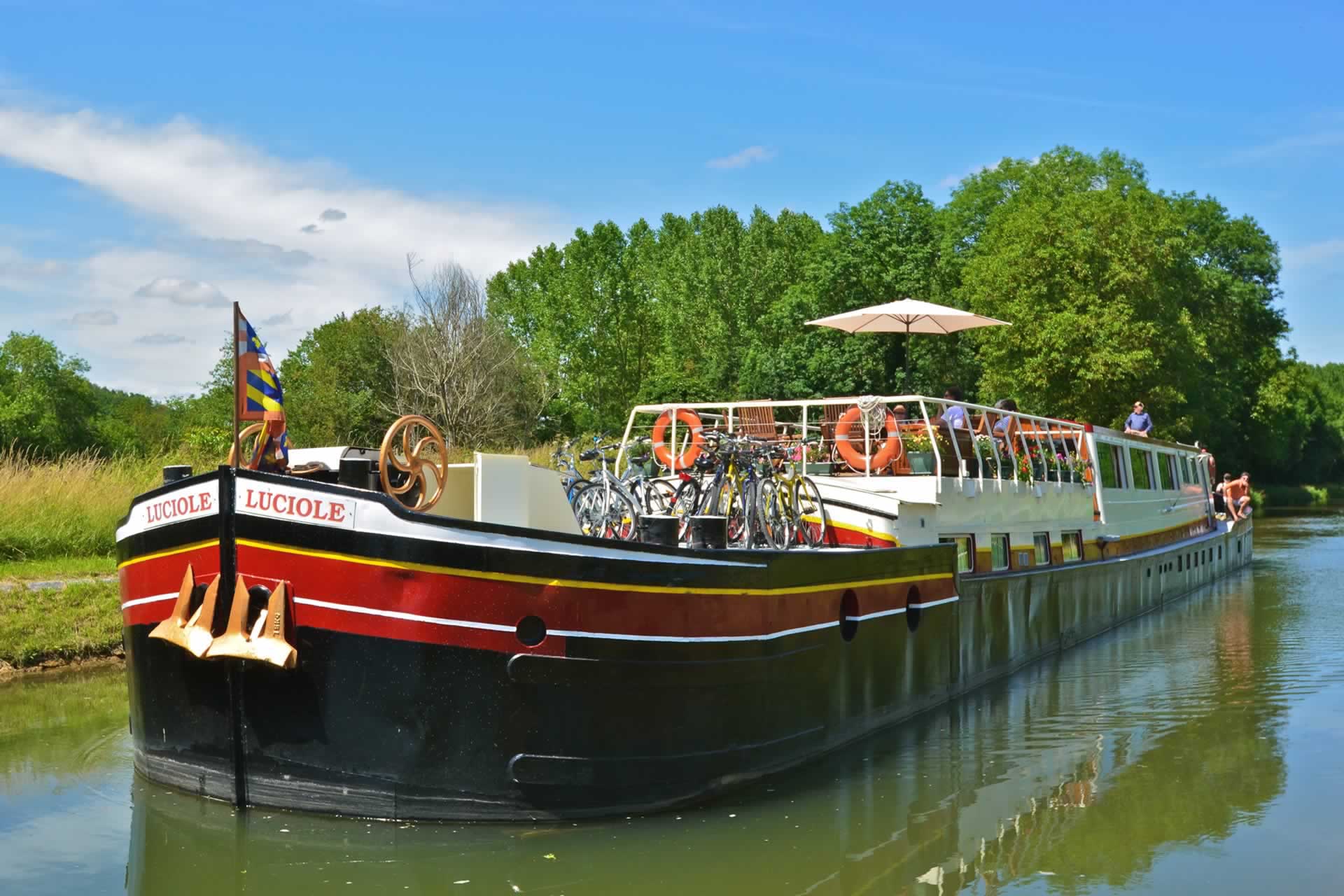- Previous
- |
- All articles
- |
- Next
Champs sur Yonne flood
Luciole spent the winter in Auxerre. At a mooring on the Cathedral side we contemplated the jobs before us, and watched the River Yonne whizz by. There are floods most years at this time and the water reaches formidable speeds.
Logs wedge against the bow and, the local land drain being blocked, the suggestion comes that we should loosen our lines in order to clear this. It is a proposal to be resisted: one of our friendly competitors obliged here a few winters back and disaster ensued. Their barge turned in the current, tearing adrift the mooring ring at the stern. Dangling the stone to which this was attached, she set off down the river, bashing into the road bridge on the way. The vessel finished impaled upon the barrage beside the lock, and the repair bill was large. It is all a reminder that the river could rise in our operating season too. Floods are fewer in summer, and generally milder, but are taxing enough when they come.
To steer a hotel-barge like Luciole you need a licence, which means a test; yet in all the paraphernalia of the curriculum, there is next to nothing on floods. On the Canal du Nivernais, where the Yonne winds in and out, experience has its value.
When traveling upstream, the principal problem is the sideways set of the current at the approach to certain locks. Keeping the vessel upstream of an imaginary line extending from the centre of the lock is the fundamental here. But downstream travel has its moments too, of course, with such excitements as swiping whoever might be lying against the pontoon at Mailly-la-Ville, positioned as this is on a bend. In Auxerre itself, the Pont Paul Bert, the multi-arched road bridge, crosses the river at an angle. It is a mistake to line up for the major arch from far away: the bow might reach it, but the current will aim to carry the stern through the next opening down.
The biggest challenge on the descent comes at the lock called Bélombre. Here the current, swinging into the curve, sets off sideways on the final approach. The photos show the course to take. Once, in the days of carrying grain, we saw an amazing recovery here, when a 38 metre freighter, manned by a trio of Dutch lads, grounded long enough for her stern to be carried towards the jetty. The steerer accordingly edged the vessel forward, just enough for the bow to reach the lock, albeit badly skewed, while, tutting under his breath, one of his pals dropped a tyre between barge and jetty wall. With rudder hard over and a blip on the engine, the vessel then straightened, pivoting on the lock entrance itself - before going in precisely. With the steerer hopping off to wind a gate, his Alsatian stood upright, grinning, with its forepaws on the wheel.
An alternative here – the only course when the river was really roaring - was to stop against the towpath, then ease the vessel in by hand. A row of iron bollards stood for that purpose, but were removed a few years ago because they impeded the grass-cutting mower. So the only possibility nowadays is to tie to that telegraph pole in the picture - if that can be left by the powers that be.
To answer the inevitable question: no, we don’t have a bow thruster, for reasons of space, complication and vulnerability. I doubt one would work here, anyway. By all means prove me wrong – but with your own boat, please, not ours!
- Previous
- |
- All articles
- |
- Next



